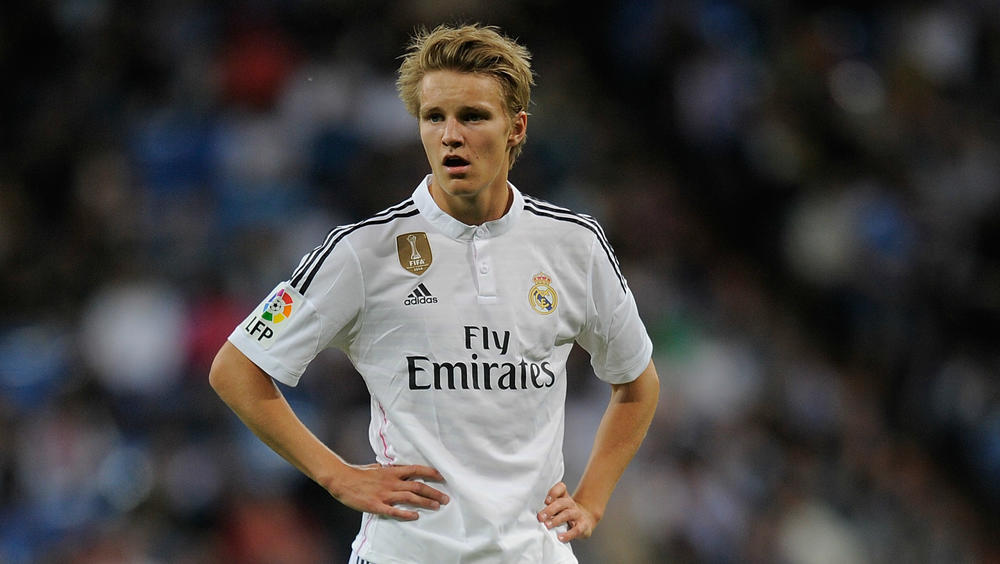Diego Costa: How bullying and rejection drove Chelsea's goal machine to the top
After ridicule and rejection blocked his path, don't expect Chelsea latest talisman Diego Costa to be nice if you stand in his way. FFT's Andrew Murray discovers what makes the Jekyll and Hyde assassin tick...
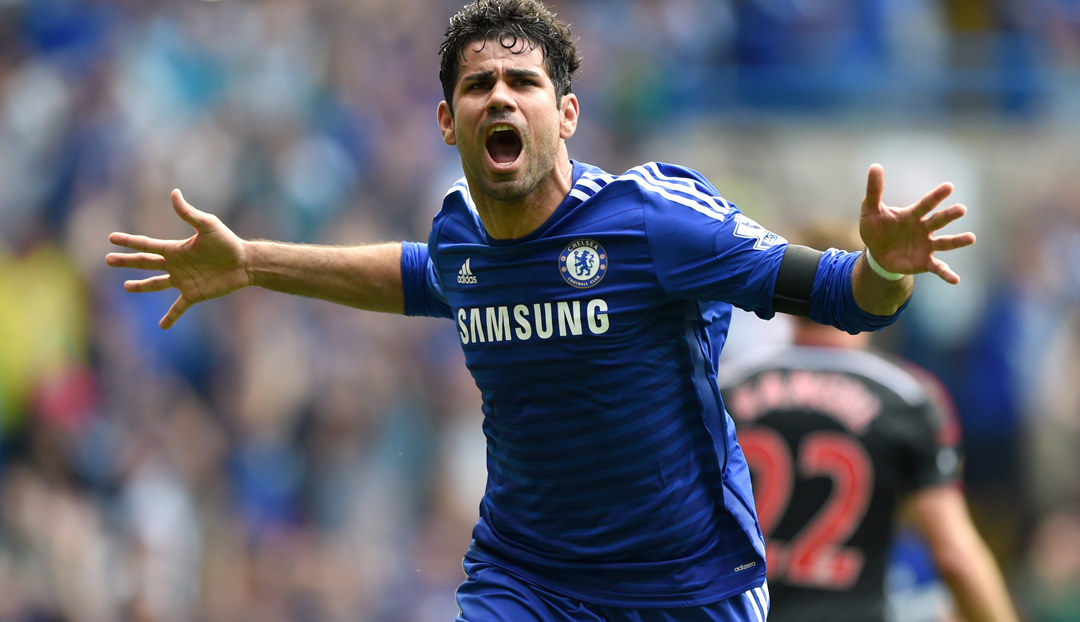
Full name: Diego da Silva Costa
Date of birth: October 7, 1988
Place of birth: Lagarto, Brazil
Height: 6ft 2in
Position: Striker
Clubs: 2006 Braga (0 games, 0 goals) 2006 Penafiel (13, 5) 2007-09 Atletico Madrid (0, 0) 2007 Braga (7, 0) 2007-08 Celta Vigo (30, 6) 2008-09 Albacete (34, 10) 2009-10 Real Valladolid (36, 9) 2010-14 Atletico Madrid (135, 64) 2012 Rayo Vallecano (16, 10) 2014- Chelsea (34, 20)
International: Brazil (2 caps), Spain (7 caps, 1 goal)
Jose Mourinho smiled. It was only the tiniest smirk, but everyone crammed inside Crystal Palace’s claustrophobic press room beneath the Selhurst Park main stand on Saturday, March 29 could see it.
Chelsea had just lost 1-0 to the Eagles, their Premier League title challenge undone at the home of pre-season relegation favourites. But why? How?
“I will not say it in front of the television cameras but I will write it down on a piece of paper,” said the Special One, a playful glint in his eye now accompanying the knowing grin. Mourinho – conceding the title with six games yet to play – stretched over the table to grab a reporter’s notepad and scribble down what Chelsea had lacked both in that game and throughout the season. “BALLS,” the piece of paper read.
Mourinho went on. “You can find things in common with every match we lost this season – to Stoke City, Everton, Newcastle away, and at West Brom where we dropped two points. My four defenders: phenomenal performance, as always. The others, I’d prefer not to analyse individually. We need to make surgical movements in the next window.”
It wasn’t difficult to spot the subtext: he craved a new striker. Someone to provide a dominant presence; to be nastier. Someone to score goals. Someone to be Didier Drogba. Fernando Torres had failed to hit the target with any of his six shots in 90 minutes against Palace, while Demba Ba didn’t manage an effort at all during his 20-minute cameo. None of Torres, Ba or Samuel Eto’o would go on to make double figures in the 2013/14 Premier League season.
A month later, Mourinho would come face-to-face with the forward he so craved, the wheels already set in motion for a summer transfer. Diego Costa – and Atletico Madrid as a whole – out-Chelsea-ed Chelsea across two legs of the Champions League semi-final. The Brazilian-born Spaniard fought with John Terry one minute, and showed great artistry with his feet the next.
At 1-1 in the second leg, Costa won a penalty. It would be nearly three minutes, much posturing and a yellow card for time-wasting, as he questioned the state of the Stamford Bridge spot, before the then-25-year-old could take the spot-kick. He smashed it into the top corner.
Get FourFourTwo Newsletter
The best features, fun and footballing quizzes, straight to your inbox every week.
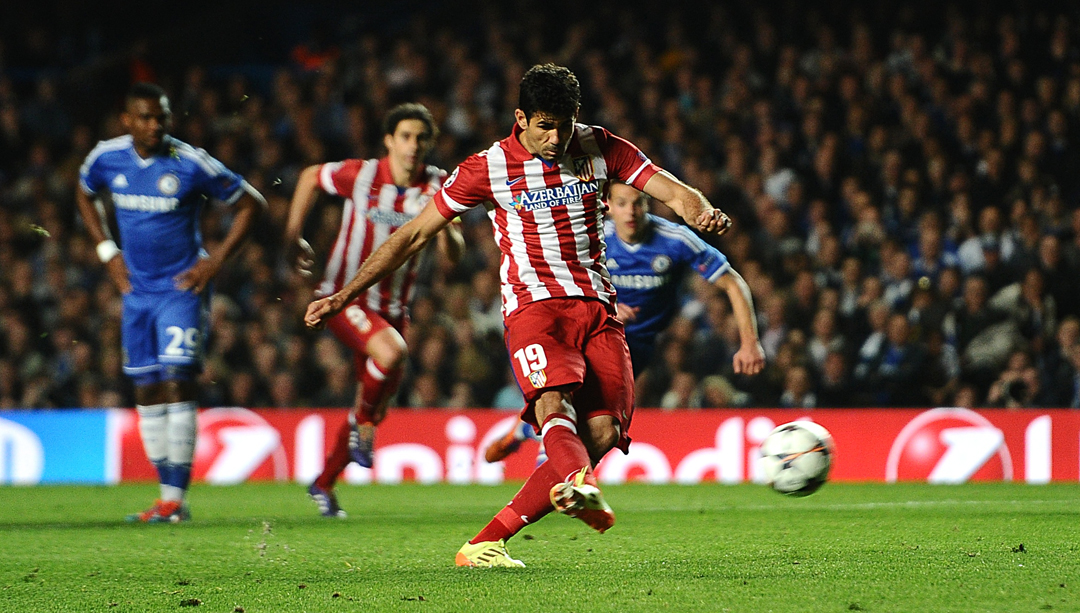
This summer, Chelsea met Costa’s £32 million buyout clause. “We needed the quality I wrote down,” said Mourinho, the Portuguese’s smile now one borne from Costa’s nine goals in his first seven Premier League outings. “I have met so many wonderful characters in football and it’s difficult to find one better than Diego. Nobody has given him anything in his life.”
Yet his route from provincial Brazil to the bustling hum of London’s King’s Road is far from your average one, and full of contradiction. His family means everything to him, yet his cousins bullied him. He spits fire on the pitch, but is calm, even shy, off it. He was rejected by big Brazilian clubs and has nearly spent more of his career on loan than he has with his parent clubs, yet is one of the best centre-forwards in the world.
In search of the inside story of how this trotamundos – a nomadic globetrotter – went from a street-dwelling nonentity to goal machine, FourFourTwo has traversed his same bi-continental path to speak to those who know Diego Costa best. You wanted balls, Jose? You’ve got them.
“His cousins gave him bullsh*t and bullied him”
Lagarto is a fairly nondescript town in the inland savannah of Sergipe state in north-east Brazil. Clustered together in red-brick-roofed houses, its 100,000 people are proud of Lagarto exports because, well, they aren’t exactly numerous.
No export is greater than Diego Costa. Here, the kids wear Spain shirts, not Brazil ones – even during the World Cup (and his defection to adopted country Spain). His football school in the town centre is the pride of Lagarto. The feeling is more than mutual. When FFT interviewed Costa earlier this year, every answer about his early roots was delivered with wistful looks. Especially when talking about his idol.
He always hated losing. If he ever lost at anything, he’d spend the rest of the day seriously p*ssed off. He’s been a fighter since the day he was born
“My friends pretended to be others,” recalled Costa, “but I always had to be Ronaldo. I tried to copy everything he did. Why? Because he was a beast, the best in the world. You couldn’t take your eyes off him; it was like time stood still. He overcame massive obstacles and will always be a leader. A phenomenon.”
When Costa came home from school, there was only ever one place he’d go. “The first thing he would do would be to grab a ball and go out onto the street and play,” said his father Jose, himself a fine amateur player in the same forward-cum-battering-ram mould. “He was obsessed. He moved so well and learned on the street how to use his body to his advantage.
“He always hated losing. If he ever lost at anything, he’d spend the rest of the day seriously p*ssed off. He’s been a fighter since the day he was born. Winning is all that matters. He plays every game as if it’s his last.”
Yet there’s more to Costa’s story than the simple, steady rise from the street to the top of the world. He’d not yet played an 11-a-side game, let alone spent time at an academy, but in 2004 a 14-year-old Costa moved more than 2,000km south to Sao Paulo to live with his uncle Edson and find a club.
Edson talked to scouts and soon his nephew had a trial at Barcelona EC, a regional club of no great standing. “We had this promising, strong defender called Felipe,” the club’s president, Paulo Moura, tells FFT. “Diego wasn’t scared: he battled for every ball like it was a fight. They were almost punching each other.
“He arrived as a complete unknown and one week later was already in the team, scoring four goals in a game at an under-17 tournament. It’s very unusual for a player in Brazilian football to come straight from the streets at that age. We knew he was something special.”
But there was another problem. Earning just £100 a month with the semi-pros, Costa wanted the life of his Sao Paulo cousins, who earned five times that selling counterfeit T-shirts, trainers and CDs on Rua 25 de Março, the city’s Mecca for ‘inexpensive’ shopping. They teased him to such an extent that Costa quit football, forcing Moura to drive to downtown Sao Paulo and “rescue” his club’s young starlet.
“It wasn’t a one-time thing, either,” recalls Moura. “I did it four times, at least. His cousins loved giving him bullsh*t and bullied him. They could afford to go to parties, the cinema and buy fancy trainers, while Diego barely had enough money for the bus. After a while, he came to live at the team’s accommodation just to forget about the jokes.”
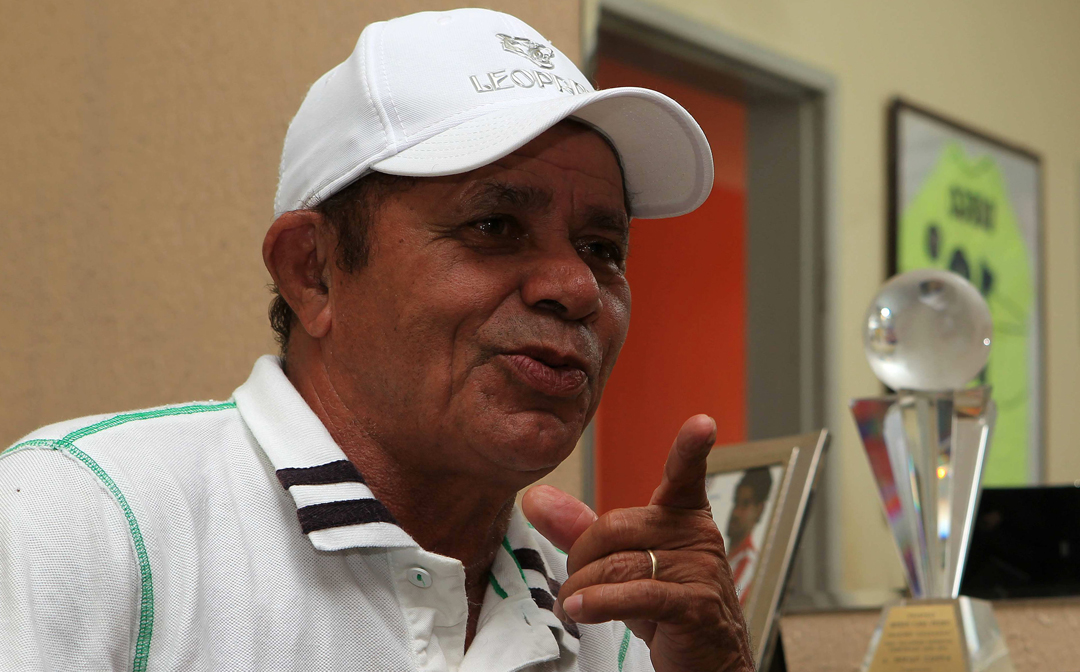
Yet the rejection continued. Sao Paulo, Palmeiras and Portuguesa declined the chance to see Costa play, not because of any lack of talent, but because of a lack of proper scouting and trust in Moura’s, and others’, eyes.
“He’s never been one to take things lying down,” Cristiane Pernambuco, Costa’s first agent, tells FFT. “He wasn’t very patient, probably because of the bullying. We kept telling him that in the future he’d make as much as them. Then things started happening for him. By 15, he was training with professionals every day.”
Diego started to cry. He screamed: ‘I’m not playing anymore. I gave everything I could and they do this to me. I quit.’
But, frustration building, Costa punched an opponent and threatened the referee. His 120-day ban meant he would be suspended when super agent Jorge Mendes was visiting to run the rule over him. “Diego started to cry,” says Moura. “He screamed: ‘I’m not playing anymore. I gave everything I could and they do this to me. I quit.’ But I had a video that showed the defender had punched him first. It was self-defence. Thankfully our appeal was accepted and he could play in the game.”
Costa only played a half, but it was more than enough. His personality immediately endeared him to Mendes, who had an agreement with Portuguese club Braga to provide the Primeira Liga side with young talent from minor teams.
“There were two other players, as well as Diego, who travelled to Portugal,” recalls agent Pernambuco. “From the first minute, Jorge treated him in a different way. Diego would watch the Braga games from a VIP box, all fancy. But what we liked most was that strong character.”
So strong, in fact, that he went against father Jose’s wishes in going to Portugal in the first place. “We didn’t want him to go,” said Costa Snr, who was offered a job at Braga president Antonio Salvador’s construction firm to sweeten the deal. “It seemed too much of a risk. He could’ve gone to Sao Caetano, a good option for him, but he said he’d given his word to Braga and he had to stand by it. He was so bloody stubborn. ‘If you don’t let me go,’ he said, ‘I’ll just leave anyway.’”
“There were a load of old guys and this overgrown kid who was fighting everyone”
Costa’s first six months at Braga were difficult. He knew nobody, the close family unit that had so defined his upbringing unable to join him. Father Jose’s daily routine – cigarette, coffee, check the post, lunch, nap, see his parents, dinner, sleep; repeat – was too entrenched for him to leave Lagarto, let alone Brazil.
Diego lived with a couple of team-mates from Braga’s reserves – “very closed-off individuals, impossible to be friendly with,” he told FFT – who saw the teenage Costa as more competition than companion. Some days he’d sit, alone, and cry. Not that he ever breathed a word to his parents, his mother Josileide in particular (“she’s a bit of a crier herself”), whom he would always assure that everything was fine.
For the second time in his young life, Diego Costa didn’t particularly want to be a footballer. But this time, he knew he wanted to make the beautiful game his career as best he could. Put simply, the knowledge that his earnings could give his parents a better life was too good to turn away.
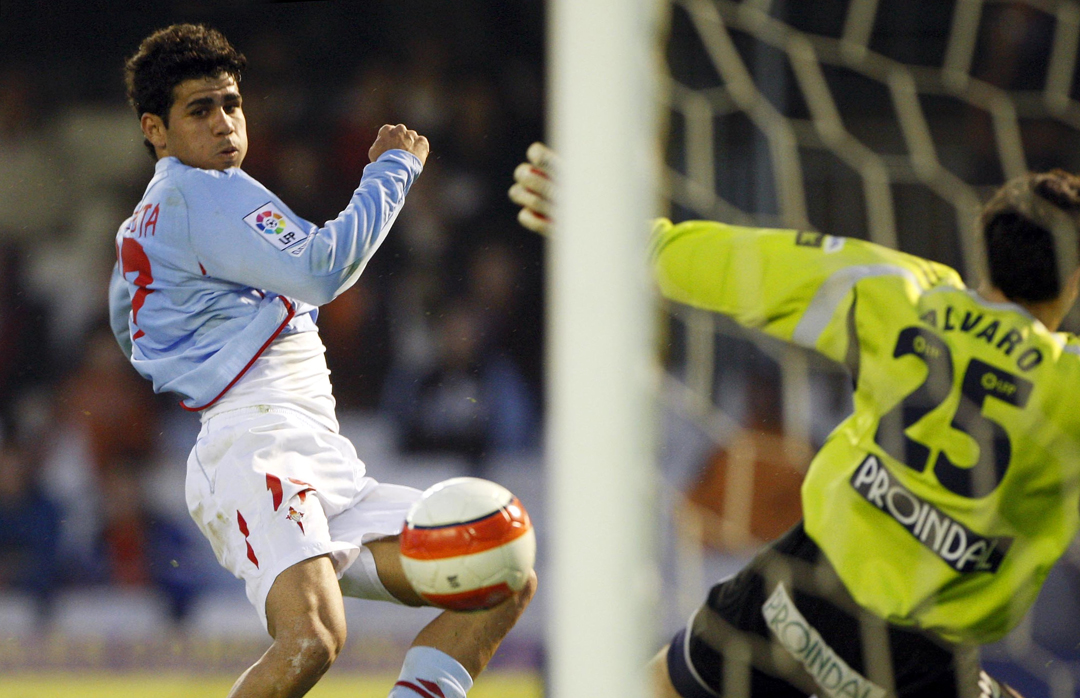
So Costa worked tirelessly, a determination to succeed for his family forged in adversity. He spent the beginning of the 2006/07 season on loan in Portugal’s second tier with Penafiel, impressing coach Rui Bento – a member of the country’s 1991 Under-20 World Cup-winning team alongside Luis Figo and Rui Costa – with five goals in 13 games.
“You see those kinds of players at 17 or 18 and they have exceptional quality,” recalls Bento with great pride of his loanee’s impressive short spell. “That’s what Diego was like. He wanted to be somebody in football.”
The pair soon developed a close relationship. Costa had a lucky pair of boots he wore in every game and training session. When they tore, Bento bought his protégé a new pair from his own money. By the end of 2006, Bento had also helped secure Costa a move to Atletico Madrid after a chance meeting with Atletico scout Javier Hernandez.
There were a load of old guys and this overgrown kid who was fighting everyone. He wasn’t scared of anything – an incredible personality. Technically, he was brilliant
“Rui told me he had this kid of 17 who he liked a lot, so I called Atletico and they told me to stay one more day and check him out,” recalls Hernandez. “They took me to Chaves, which is in the middle of nowhere, for this second-division game. The standard was horrible, like the third division in Spain.
“There were a load of old guys and this overgrown kid who was fighting everyone. He wasn’t scared of anything – an incredible personality. Technically, he was brilliant; he just needed to understand his body better because he was slightly uncoordinated. But just look at him now. He’s a beast.”
Seeing past the gangly frame, Hernandez recommended his Atleti signing in an instant, the €1.5m transfer finalised in December 2006. Yet even here Costa looked out of place, turning up at Madrid’s Barajas airport in flip-flops and Bermuda shorts, the temperature -4C. “He looked a bit lost,” admits Hernandez.
But if Costa thought he’d made it – he bought a gleaming, oversized watch with his first Spanish pay packet – he was in for a shock. At 18, Costa had been signed to improve, not to challenge undisputed star Sergio Aguero (just four months his senior). The street fire from competing with brother Jair and his cousins’ spite was unmistakably bubbling inside, but rarely did it erupt at the surface. The rampant bull was only visible if you looked for it, as the scout Hernandez had done in Portugal.
“He was in Portugal and I never looked at him,” sighed Mourinho – another client of Jorge Mendes, don’t forget – earlier this year. “Everybody was blind, including myself. At Atletico, Aguero was the superstar.”
For the third time in his nascent career, Costa would be loaned out, this time to second-tier side Celta Vigo in 2007/08, beginning a four-season cycle of starting a campaign with a different team. “He had real power and potential, similar to the original Ronaldo,” said then-Celta goalkeeper Esteban recently.
“But he was still very young, a player with great potential rather than a reality yet. It was hard for him: he came to a club that was not going back up; where there was tension and pressure. Players went unpaid.”
Costa scored five goals in 30 Segunda appearances, including a goal-of-the-season solo run from inside his own half against Numancia (below), but the 18-year-old was still very raw, a Bambi-esque footballer who wasn’t always in control of his own body or emotions. The trotamundos was in danger of wandering himself into oblivion.
It needed his coach in 2008/09, on loan at another financially troubled second division team, to stoke that fire. “I’ll never forget telling him: ‘The day you behave like a hard, aggressive worker and train at 100 per cent, you’ll play in whatever team you desire,’” said Albacete coach Maximo Hernandez.
That’s right: the Diego Costa that has harried La Liga and Premier League defences into shivering wrecks – someone a former coach said is the most consistent player he ever worked with because “he goes into every game wanting to score and get a yellow card” – needed to be told to work hard.
Nine goals for a struggling Albacete were enough to survive relegation, but not enough to keep Costa at Atletico, where he’d still yet to make a first-team appearance. In the summer of 2009, he joined Real Valladolid as part of the deal that took highly-rated keeper Sergio Asenjo to the Vicente Calderon.
Though La Pucela would be relegated, and Costa managed only two more goals after registering six in his first 12 La Liga games, tongues wagged at the irrepressible combination of power, skill and aggression. Especially the aggression.
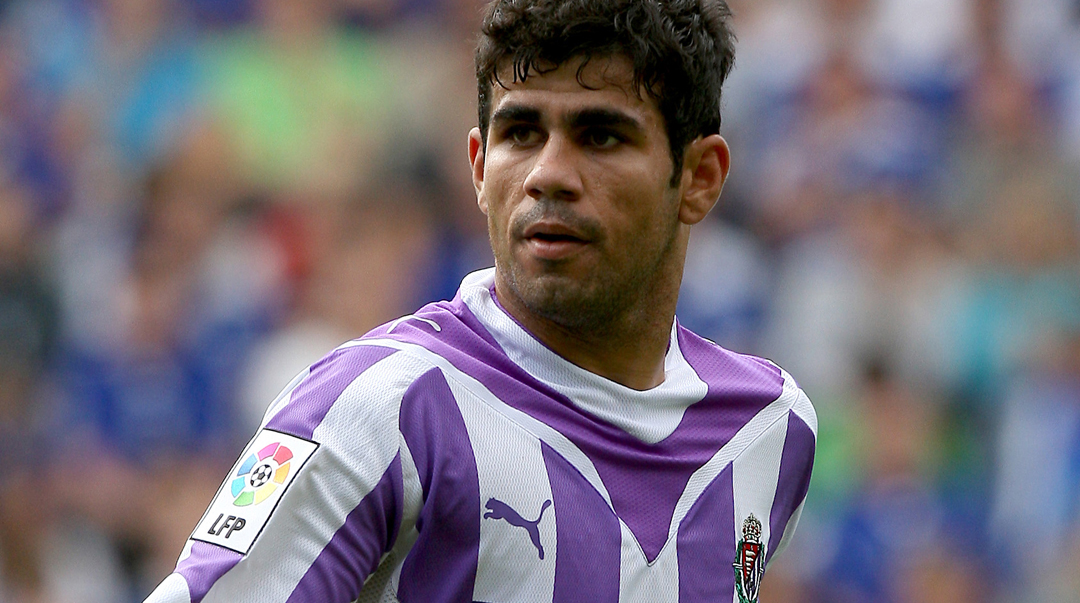
In that season, Costa picked up nine yellow cards and one straight red for stamping on Espanyol’s Didac Vila. The beast that Maximo Hernandez had awoken at Albacete was now a firmly entrenched part of the Costa psyche, necessary to fire the loco Lagarto lad into his on-pitch self, but not yet controllable enough to avoid a referee’s wrath.
“The street had been my school,” Costa said. “I fought with everyone. I couldn’t control myself. I insulted everyone, I had no respect for the opposition – I thought I had to kill them. Boys who grew in academies are taught to control themselves and respect others, but no one ever told me otherwise. I was used to seeing players elbowing each other in the face and thought it was the norm.”
“Diego is our leader, he just doesn’t know it yet”
Atletico were impressed enough to exercise a €1m buyback option, but the 19-year-old Costa’s first Rojiblanco season in 2010/11 was far from the happiest. Most often a substitute behind Aguero and Diego Forlan in Quique Sanchez Flores’ preferred line-up, Costa was guilty of trying too hard. Nothing he did came off and he resembled a try-hard; a limited lump with a lived-in face.
“In Diego’s first season, the Calderon booed and whistled him,” recalls Costa’s discoverer in darkest Portugal, Javier Hernandez. “Once, an Atleti-supporting friend told me: ‘Who’s this bag of sh*t you’ve brought us? Some bloody eyes you’ve got!’ I responded: ‘You’re wrong. He’s a good player. You’ve got to let him grow.’ No one remembers that now.”
In fact, Atleti wanted to cut their losses. In late July 2011, Costa’s sale to Turkish side Besiktas was all but agreed, the medical all that remained. But in his final training session before travelling to Istanbul late one evening, Costa ruptured the cruciate ligament in his right knee. It was, he told Spanish television earlier this year, God’s will. Destiny.
I was used to seeing players elbowing each other in the face and thought it was the norm
It was during his convalescence, and a goal-laden loan at Rayo Vallecano from January 2012, that Atletico started to take note of what they had. “It’s not logical that he recovered from such a serious knee injury, went to Rayo and scored 10 goals when he’d had basically no training whatsoever,” said Atleti fitness coach Oscar Ortega. “I couldn’t believe my eyes. You can’t explain this, no matter how many books you read. I asked him what work he’d done as a kid and he told me ‘nothing’, that he’d come from the street. There are no limits to his strength. He’s a bull.”
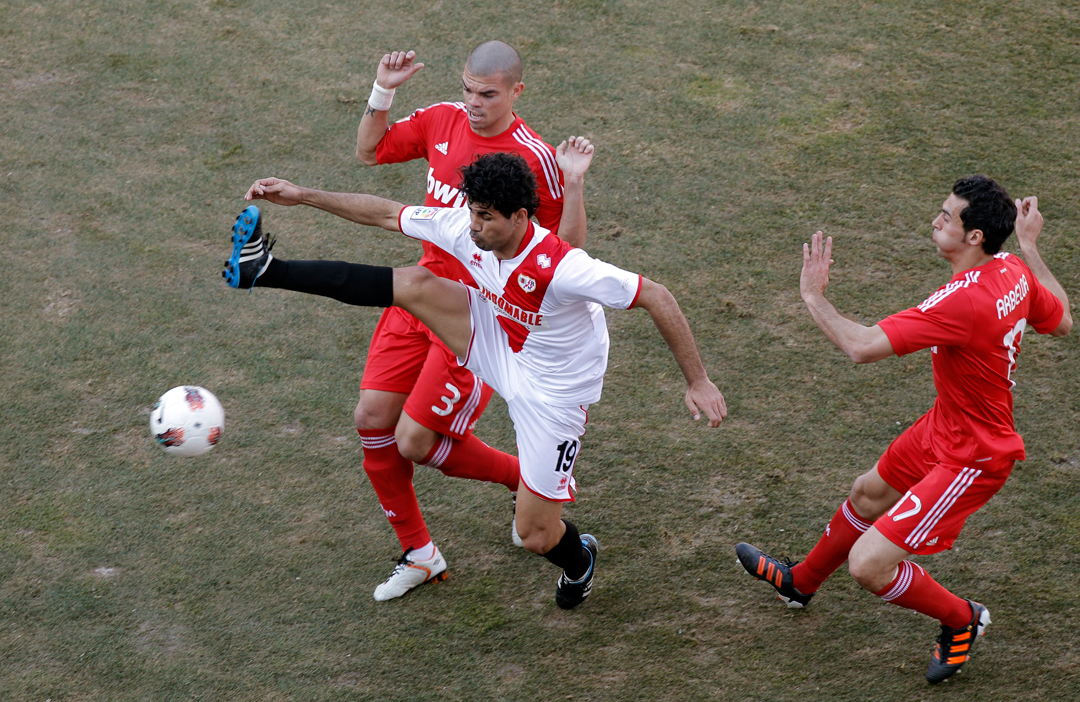
When Costa returned to the banks of the Manzanares river in June 2012, after six months in Madrid’s left-leaning working-class backbone at Rayo, the 23-year-old was told by new Atleti coach Diego Simeone that he would be sold. This was when everything came together: Costa’s fight for survival, his brash on-pitch personality, the extreme talent. Everything was harnessed into the complete package to win over a coach that Costa knew was ripe for turning.
“When I saw him in training, I wanted to die,” Simeone said at the end of last season. “He was unstoppable. Diego Costa transmits a strength that has a contagious effect on the rest of the group. People say he plays at the limit – curiously, they also said that about me. He gets better every day.”
His influence grew, as did his notoriety. Across a two-week period against Real Betis, he was almost Spain’s most wanted man. In the Copa del Rey in January 2013, Betis defender Antonio Amaya’s errant header presented Costa with an open goal. “Thanks for the present,” shouted the devilish Costa, running towards the tunnel, to spark a huge brawl. “Doctor Diego, Mister Costa,” read Marca’s Jekyll and Hyde headline.
“If my team-mates had not held me back, I’d have killed him,” hissed Amaya after the game. “That shows what kind of person he is: he has no heart and no shame.”
Seamus Coleman knows how that feels, having been on the receiving end of Costa commiserations after an own goal in Everton’s 6-3 home defeat to Chelsea in late August.
When Costa came off the bench in the league game between Atleti and Betis less than a fortnight later – scoring the winner after five minutes, naturally – he was a marked man. Betis players kicked him, elbowed him – Amaya even spat at him. Yet he didn’t react, bar the usual Costa play-acting and occasional stray foot.
“There are no scores to settle and no problems,” Costa shrugged afterwards. “What goes on the pitch stays on it. I don’t take it home with me.”
There are no scores to settle and no problems. What goes on the pitch stays on it. I don’t take it home with me
It showed. From those two brutal Betis fixtures, Costa did explode, the majority of his 56 goals in the last two Atleti seasons coming after going to war with Amaya. “Diego is our leader,” said midfielder Tiago in the summer of 2013 after the departure of Radamel Falcao to Monaco. “He just doesn’t know it yet.”
It wasn’t just the amount, at better than a goal every other game – it was how he scored them. There were overhead kicks, back flicks, an unerring ability (since continued in royal Chelsea blue) of nutmegging a keeper with early shots, plus countless attempts of sheer, bludgeoning power.
But if there was one Costa goal that summed up the No.19’s brutish blend of desire and talent, it came against Getafe in April. The ball rolled to the back post and Costa dived full-length to tap it home, careering into the post in the process. So deep was the cut, you could see bone. Not only did he play the next game, against Elche five days later, he scored.
“Another cut doesn’t harm the tiger,” said Simeone, smiling. “Anyway, it’s the post I feel sorry for.”
Ultimately, it took Simeone – an Atleti legend, adored by the fans – to find the middle ground for his hulking forward to fire Los Colchoneros to the 2013 Copa del Rey, a first La Liga title since 1996 and the 2014 Champions League Final. Fiery and pushing the limits of fair play? Yes, but an unstoppable force of nature in the process. Does his own dressing room tire of his constant antagonism?
“You must be joking! You won’t find a single team-mate of Diego’s, someone who’s shared a dressing room with him, that has a bad word to say about him,” says Costa’s coach at Rayo Vallecano, Jose Ramon Sandoval. “If you take away this essence of him, he wouldn’t be the great footballer he is. His character is his greatest strength. He’s a winner. Those notches on his ‘aggression’ bed post are based on suffering.”
He became a target for Canal+ cameras, as one of La Liga’s most videoed players. What strikes you most is that he actively goes looking for conflict, running into defenders at any opportunity to incite the elbows, punches (See Federico Fazio’s fine effort to Costa’s ribs for Sevilla) and spitting that distract opposition defences. Last year, he was La Liga’s most fouled player, ahead of Cristiano Ronaldo and Lionel Messi.
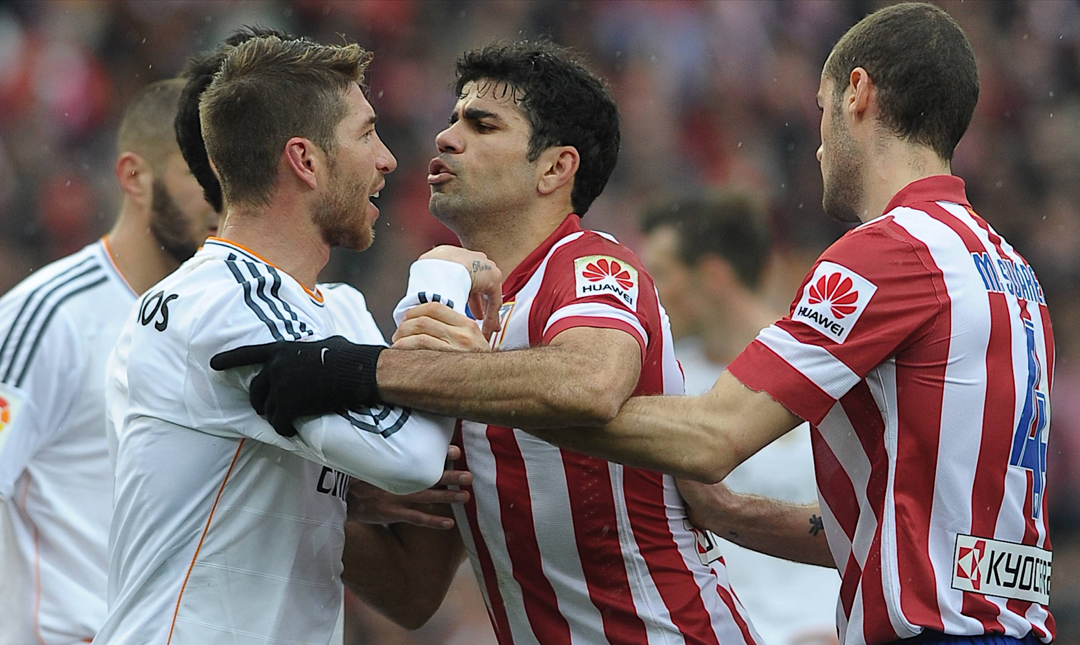
Most obvious are his battles with Real Madrid’s Sergio Ramos. Barely two minutes go by without the pair exchanging shouts of “eh, carajo!” (“oi, dickhead!”), late tackles, even each other’s saliva, yet it’s Ramos – whom Costa describes as “like a brother” – who persuaded the Brazil-born striker to favour his adopted country at international level during one Madrid derby. “So are you going to stop dicking around,” Ramos whispered, “and play for us?”
The message is clear: all the shoulder charges, “oi, dickheads” and occasional headbutts are psychological stimuli to remind Costa of the necessary fire to perform. Away from the pitch, he’s mas bueno que el pan – literally ‘better than bread’, but meaning ‘kindness personified’.
It’s the same in interviews. He’s softly spoken, even shy. “If the game’s quiet, I have to put the fire into myself,” Costa told FFT before this summer’s World Cup, giving credence to the theory that for a defender to best combat him, they shouldn’t react to his on-field chicanery.
“I’m a different beast off the pitch. I’m relaxed and very happy. On it, I fight to continue to lead the life I have off it. Every time I score I’m happy for myself, of course, but I know it makes those I’m closest to more so, because they depend on me for their own lives.”
“He’s still the same naïve, honest, warm guy from a small village in Brazil”
When the opportunity to join Chelsea arose this summer, Costa nearly refused, as he had done to Liverpool in August 2013. For the first time in his football career, even his life after his cousins’ bullying, he felt at Atletico like he belonged. “I don’t like moving house,” he has said. “I want to feel important.”
FFT has its own experience of that quest for importance. The April morning before we spoke to Costa pre-Brazil, he had torn his hamstring – the injury that would deny Atleti their talisman in the title run-in and in the Champions League final. The desired cover shot was of Costa running straight to camera. Yet even hampered, he still tried, albeit on one leg. He didn’t want to let anyone down.
In July, Mourinho was quick to talk up his new centre-forward, Chelsea’s problem position in the Drogba-less years of obscurity. “What jumps at you immediately is his physical and psychological profile,” said the Special One.
“He’s incredible and still the same honest, naïve, warm guy from a small village in Brazil that is, as we say in Portugal, beyond the sunset. He interacts in the group and has conversations, even though he knows only 10 words of English.”
Whatever his language skills, Costa’s form has been stunning, a goal away from equalling the best start to a Premier League season – eight goals in five games – held by Aguero and Coventry City’s Micky Quinn.
We didn’t really see Costa or Fabregas all game and then all of a sudden he gets an opportunity, plays a 50-yard ball to Costa and it’s a goal
A closer look at the stats are even more revealing. Before the season’s second international break, he’d found the net with 40 per cent of his shots at goal. Anything over even half that total is considered incredible. The key is a borderline infallible ability to make the keeper work: in his first nine league games in Blue, he missed the target just five times. Five.
His interaction with Cesc Fabregas has been just as mesmeric. The Blues’ other summer arrival has been the smooth Mozart to Costa’s AC/DC bludgeoning, assisting four of his compatriot’s first nine league goals.
“We didn’t really see Costa or Fabregas all game and then all of a sudden he gets an opportunity, plays a 50-yard ball to Costa and it’s a goal,” huffed Jack Wilshere after Arsenal’s 2-0 defeat in October.
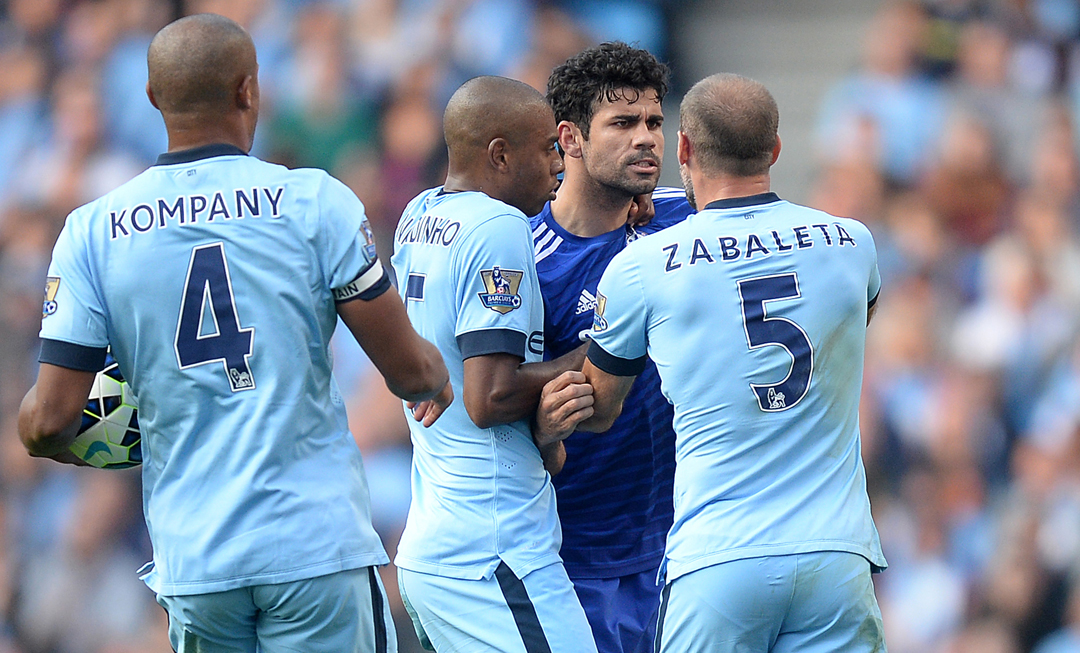
While things might be going swimmingly at Stamford Bridge, it’s been different for Spain. Surrounded by diminutive midfielders weaving pretty passing patterns but rarely engaging the centre-forward, he struggled both at the World Cup and in Euro 2016 qualifiers, breaking his duck only against lowly Luxembourg, his seventh cap.
He’s different to Drogba. He’s quicker, which means he can run in behind defences, and technically he’s very good
Chelsea’s more direct counter-attacking suits him, just as Simeone’s Atleti did. It took Torres 43 games to reach seven Chelsea league goals, Andriy Shevchenko 47 and Costa just four. Even Drogba, the returning paragon of Stamford Bridge striking excellence, was a slow starter, taking 24 games to register seven times.
“He’s different to Drogba,” said the 26-year-old’s former Valladolid coach Jose Luis Mendilibar. “He’s quicker, which means he can run in behind defences, and technically he’s very good. He’s young and will only get better.
“And of course he scores goals, too – important ones. Fans look at the ‘goals scored’ columns, but coaches look at what kind of goals a striker scores and Costa is one of those players who scores the opening goal that breaks the opposition down or the only goal in a tough 1-0 win.”
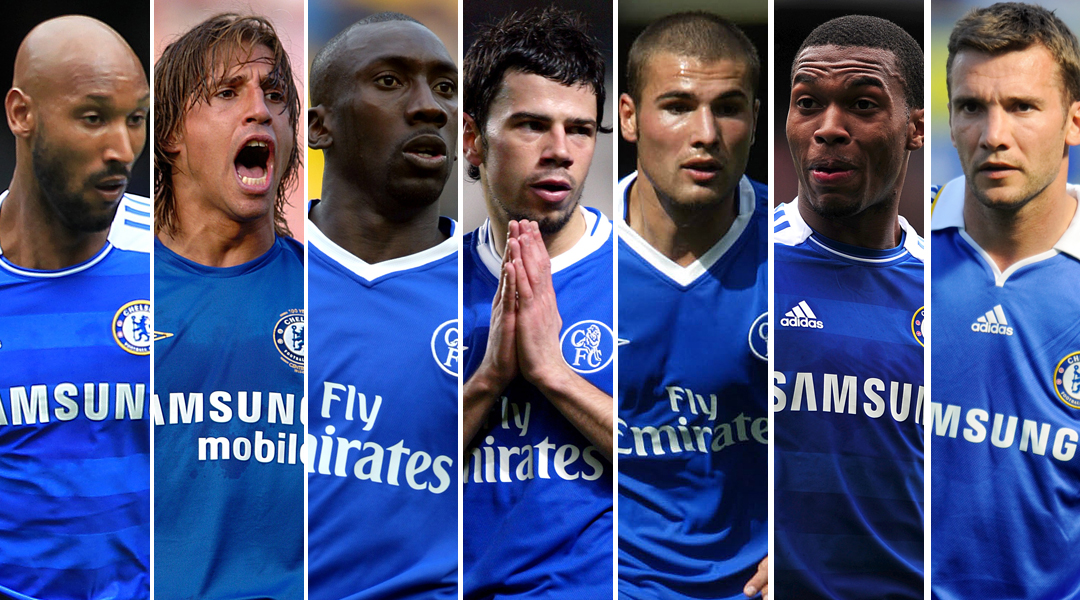
That’s what Chelsea missed last season; what they missed against Crystal Palace in March to lose the league; the reason why the Blues’ wait for a Premier League title is unlikely to extend into a sixth season.
He may “lack English respect” according to Everton boss Roberto Martinez after his goading of Seamus Coleman, or have nearly throttled Manchester City full-back Pablo Zabaleta, but the predatory, aggressive trotamundos who scores goals for his family has found a home in west London. Diego Costa is the complete package. Just don’t make him angry. You wouldn’t like him when he’s angry.
This feature first appeared in the December 2014 issue of FourFourTwo magazine. Subscribe!
Andrew Murray is a freelance journalist, who regularly contributes to both the FourFourTwo magazine and website. Formerly a senior staff writer at FFT and a fluent Spanish speaker, he has interviewed major names such as Virgil van Dijk, Mohamed Salah, Sergio Aguero and Xavi. He was also named PPA New Consumer Journalist of the Year 2015.
